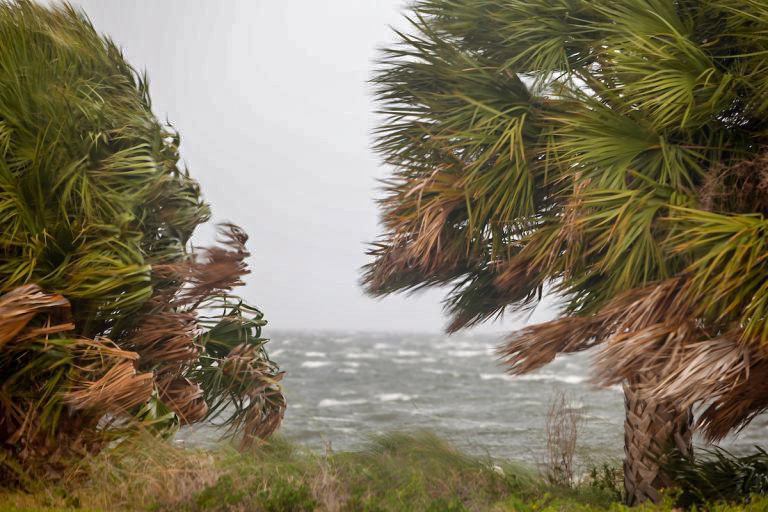How palm tree can survive hurricanes
In the aftermath of a hurricane, some palm tree owners may worry about the survival of their beloved palms.
With more than 2,600 species, the iconic palm seen across Florida landscapes is heartier than one may think, even when those lush green palm fronds are suddenly wilted and thinned out due to extreme winds and rains from a storm.
Palm trees are important to consumers, not only because they provide a pleasing aesthetic to the landscape, but they add a source of food and serve as habitats for wildlife, said Brian Bahder, associate professor at UF/IFAS Fort Lauderdale Research and Education Center.
“They are ubiquitous in the tropics and being able to imbue that tropic vibe here at home (within the United States) can allow people to semi-experience tropical vibes without the high cost and stress of going international,” he said. “Some species are natives and are important food and nesting sources for our native wildlife. Meanwhile, other palm species are critical crops worldwide, with coconut and oil palms being the most important.
Some trendy health foods like acai also come from palms, making them a beautiful and sometimes nutritious addition to their landscape. In a UF/IFAS Extension publication, “Hurricane-Damaged Palms in the Landscape: Care after the Storm,” experts at the UF Institute of Food and Agricultural Sciences provide detailed instructions for dealing with broken and uprooted palms, including the necessity of proper water management during the re-establishment period.
Additionally, Bahder addresses consumer questions for the peak of hurricane season.
Q: How sturdy are palm trees against a tropical storm or hurricane?
An established healthy palm will withstand a storm like Hurricane Debby without serious problems. Depending on the palm, the leaves might shred or bend at the petiole, but not sustain significant damage that would require replanting. Palms have hundreds of fibrous roots that anchor them in the group, nicely, and the trunks of palms have their vascular tissue randomly distributed throughout the trunk. They don’t run perfectly straight up and down, they “snake” their way through the trunk, and give the palm trunk high flexibility and more resistance to breaking when compared to typical trees, like oak trees.
Q: What are the signs that your palm tree has survived or not survived? What should homeowners look for?
In this case, unless the canopy falls off, it should be fine if the palm looks similar to its appearance before the storm. It may be possible for fungal pathogens to make their way into the canopy, combined with excess rainfall, but this likely won’t manifest for a while. In an extreme event — let’s say the canopy is completely shredded — if you see the spear leaf expanding in the following month, the palm is fine; it just needs time to recover.
Q: If you must remove the palm tree, is it possible to replant any part of it?
No, you will have to plant a new palm. You can’t use cuts or parts of the original palm.
Q: What does science tell us about recovery time for palm trees after a storm?
The main point to note is that it will be at least six months (and probably longer) before it is apparent that a palm will recover. This depends heavily on the palm species and the extent of damage. Palms that grow slowly naturally can recover rapidly if they need to. Some palm species could fully recover in six months, while others could take years. Regardless, palms are slower growers than typical trees, and they only have one growth point — palms with a single trunk, that is — so it will take longer to know if it is recovering compared to other plants. Patience is important with palms.
Lourdes Mederos, a public relations manager at UF/IFAS Communications, can be reached at rodriguezl@ufl.edu


Meet the Editor
David Adlerstein, The Apalachicola Times’ digital editor, started with the news outlet in January 2002 as a reporter.
Prior to then, David Adlerstein began as a newspaperman with a small Boston weekly, after graduating magna cum laude from Brandeis University in Waltham, Massachusetts. He later edited the weekly Bellville Times, and as business reporter for the daily Marion Star, both not far from his hometown of Columbus, Ohio.
In 1995, he moved to South Florida, and worked as a business reporter and editor of Medical Business newspaper. In Jan. 2002, he began with the Apalachicola Times, first as reporter and later as editor, and in Oct. 2020, also began editing the Port St. Joe Star.